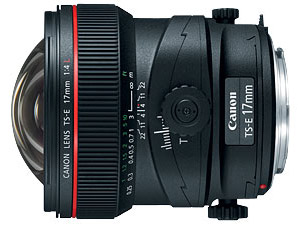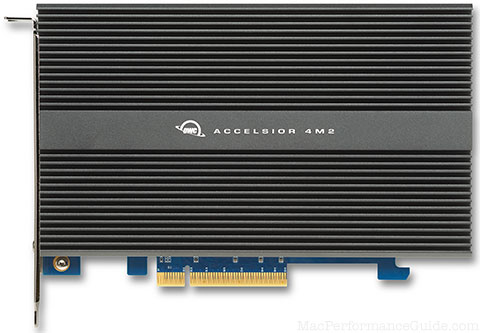
|


|


|

|

$200 Leica BP-SCL6 Lithium-Ion Battery (8.4V, 2200mAh) BACK IN STOCK in Accessories: Batteries and Power
|

|
Canon TS-E 17mm f/4L
Related: Canon, Canon lenses, Canon TS-E 17mm f/4L, shift lens, tilt shift
The Canon TS-E 17mm f/4L (about $2499) is a unique offering: never before has such an extreme wild angle tilt/shift lens been available on a DSLR.
Kudos to Canon for building such an exotic lens which is a groundbreaking “first”. As of early 2010, Nikon has nothing comparable, the widest Nikon tilt/shift being the 24mm f/3.5.
Architectural and landscape photographers in particular should be considering this lens.
An in-depth review is found in DAP also as a comparison in the review of the Canon 17-40 and 16-35 zooms.
Solves problems no other lens can
The Canon 17/4L is expensive, but were I purchasing a tilt/shift lens, it would likely be my very first choice, because it’s unique. While expensive, it’s a great value, because no other lens offers its capabilities.
The shift ability and low distortion of the 17/4L mean that architecture shooters have an extremely powerful tool at their disposal for creating professional-grade images. Landscape shooters will also benefit, with the ability to shift away distracting elements, and to control depth of field via tilt.
The ultra-wide angle of view allows photographing tight spaces in a way that heretofore has been impossible without a view camera. Think building interiors (kitchens, churches, etc), external architecture, etc.
A standard (non shift) ultra wide lens could be used with software perspective correction, but with a large amount of cropping and resolution loss.
Canon’t tilt/shift offerings
Canon has offered tilt/shift lenses for a number of years, including the 24mm f/3.5L, the 45mm f/2.8L and the 90mm f/2.8L. In 2009 Canon introduced the 24mm f/3.5L II and 17mm f/4L.
Build quality and ergonomics
Build quality is very high. The 17/4L is almost exactly the same size as the TS-E 24/3.5L II, which is to say it’s a fairly bulky lens, in keeping with its tilt and shift functionality.
The 17/4L weighs in with lens hood and caps at 897g (2 pounds). By comparison, the 24/3.5L II weighs 815g and the original 24/3.5L weighs 625g. That extra weight is irrelevant given its purpose-built functionality; kudos to Canon for making the lens large enough to get the job done well.
There is no lens hood. This is very nearly a rectilinear fisheye lens to accommodate the tilt and shift functions at 17mm.
Knobs and controls
I found the tilt and shift movements very easy to use. They are clearly improved over the (original) Canon TS-E 24/3.5L. The only issues I found are a bit of a tight squeeze when rotating past the viewfinder on the Canon 5D Mark II.
The 17/4L offers an astonishing 12mm of shift, traditionally the absolute maximum for much longer focal lengths, so it’s amazing to see it available on a 17mm lens! One could have expected and readily accepted a reasonable limit of 10mm or even 8mm of shift, but to offer 12mm is amazing.
The tilt mechanism can be rotated to any angle independent of shift, which allows for unprecedented versatility, something simply impossible with any Nikon tilt/shift lens, though the Hartblei SuperRotators did offer this capability first. It’s easier to use the Canon movements due to the smaller lens size and back/forth shift mechanism.
Examples
The full review has many examples at much larger sizes. Functionality examples are below.
The shift advantage
The shift function can eliminate clutter, or be used to “stitch” an image for higher resolution.
Not shown is the use of tilt, which can skew the plane of sharpness for far greater depth of field.
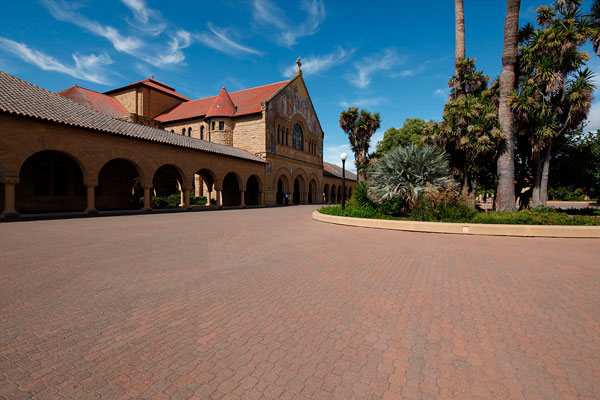
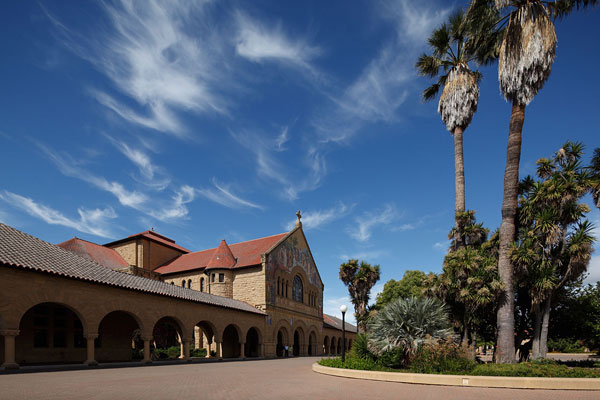
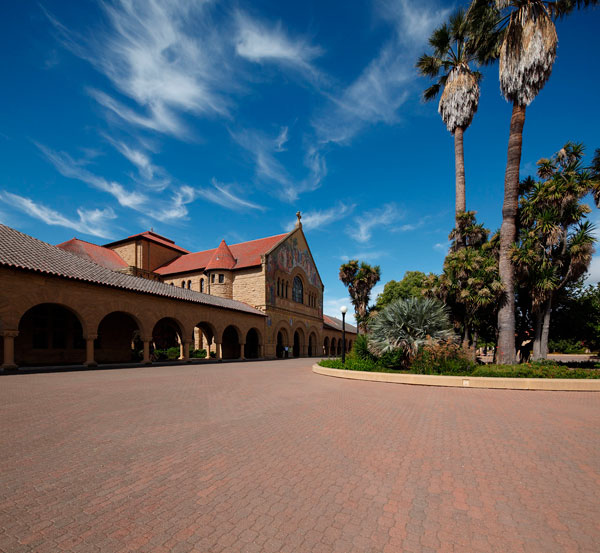
Conclusions
My full review in DAP covers a lot more, including vignetting, distortion, flare and examples.
The 17/4L is unique in being both an ultra wide angle lens and a tilt/shift lens, and therefore some photographers could legitimately consider the camera an accessory for the lens.
Based on what I’ve observed with real field shots, and its unique capabilities, I have little hesitation in giving the 17/4L my highest recommendation.
You can get the 17/4L B&H Photo, thank you for using those links.
See also my list of recommended Canon gear and lenses, as well as the gear pages.
Learn more about Canon lenses
For in-depth reviews of lenses that fit Canon cameras (Nikon and others), subscribe to Diglloyd’s Advanced Photography (DAP).
DAP is not just about lenses, it’s about cameras and technique and making better images, written to be approachable by beginner’s, but valuable to professionals. New material is constantly being added, so subscribe now!
Learn more about Zeiss ZE lenses for Nikon
You can read an overview and mini reviews here. For in-depth coverage to the Zeiss ZE line, see Guide to Zeiss ZF/ZF.2/ZE Lenses.
The Guide has numerous examples at much higher resolution, along with actual-pixels crops for each and every lens, in most cases several pages of examples per lens. New material is regularly added added to the Guide, so subscribe now!






















